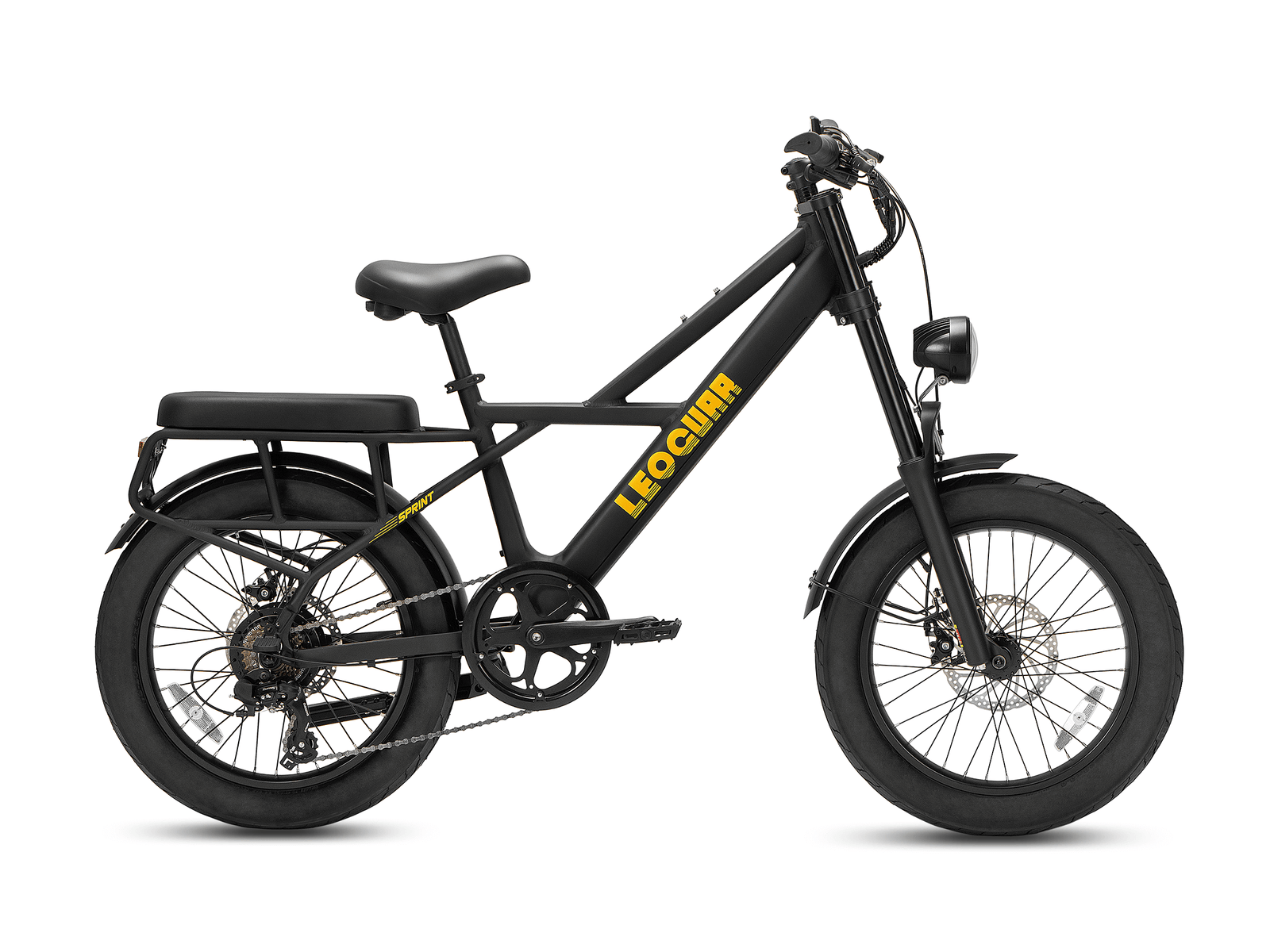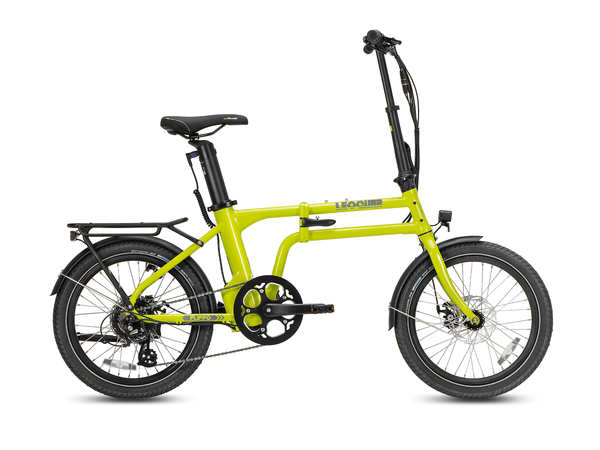
Cheap vs Discounted Electric Bikes: What You Need to Know Before Buying
You're hunting for a great deal on an electric bike. The market has tons of options. But as you look through all the listings, one important question comes up: are you seeing a real bargain or a low-quality trap?
The difference between a cheap e-bike and a truly discounted one is the most important thing in your purchase. It's what separates years of happy riding from months of problems. This guide will give you the knowledge to tell them apart, spot the warning signs, and find a high-value discounted electric bike you can trust.
The Critical Difference
First, let's make things clear. The words "cheap" and "discounted" don't mean the same thing, especially for complex machines like e-bikes.
- Discounted E-Bikes: These are quality machines from good, trusted brands that cost less for a short time. The discount usually happens because of a seasonal sale, clearing out old models to make room for new ones, or a certified used program. The bike's quality stays high.
- Cheap E-Bikes: These bikes are built from the start to hit a very low price. This happens by using poor materials, no-name parts, and cutting corners in making and testing them. Their low price never changes because their quality is always low. This table shows the main differences:
| Feature | Genuinely Discounted E-Bike | Inherently Cheap E-Bike |
|---|---|---|
| Brand | Reputable, known brand (e.g., Leoguar, Rad Power Bikes, Aventon on sale) | Unknown or generic brand with no track record |
| Components | Branded components (e.g., Shimano gears, Bosch/Bafang motor, Samsung/LG battery cells) | Unbranded, generic components with vague descriptions |
| Price Reason | Seasonal sale, model-year clearance, holiday promotion, refurbished program | Low-quality materials, cutting corners in manufacturing and quality control |
| Warranty & Support | Comprehensive warranty (typically 1-2 years) and accessible, US-based customer support | Limited or no warranty (e.g., 90 days); difficult to find support or replacement parts |
| Safety Certifications | Often lists compliance with recognized safety standards like UL 2849 for the entire electrical system. | Rarely mentions or meets any recognized safety standards. |
Hidden Costs and Dangers
That "too-good-to-be-true" price on a cheap e-bike often hides big long-term costs and serious safety risks. What you save at first can quickly be beaten by repairs, replacements, and potential dangers.

Safety First: The Hidden Risks
This is the most important area where cheap e-bikes cut corners.
Brakes: A cheap e-bike often uses low-end mechanical disc brakes with poor stopping power, which is dangerous on a machine that can easily reach 20 mph. A quality discounted bike will almost always have hydraulic disc brakes from brands like Tektro or Shimano, giving much better and more reliable stopping power in all weather.
Battery & Fire Hazard: The battery is the most expensive and potentially most dangerous part. Cheap e-bikes use generic battery packs with untested cells and battery management systems (BMS). These create a big risk of overheating and fire. Always look for batteries that are certified to UL 2849 certification. This standard tests the entire e-bike electrical system—battery, charger, and controller—as one complete unit to make sure it works safely.
Frame Integrity: A bike frame, especially one carrying a motor and battery, is under constant stress. Cheap bikes may use lower-grade aluminum and have weak welds. We've seen reports of frames cracking under normal riding, which can lead to complete failure.
The Performance and Life Gap
Beyond immediate safety, the user experience and lifespan of a cheap e-bike are badly hurt. From our experience in the shop, we've seen unbranded hub motors on cheap e-bikes become noisy and lose big amounts of power after just a few hundred miles. In contrast, a discounted mid-drive motor from a known brand like Bosch or a quality hub motor from Bafang will work reliably for thousands of miles.
You'll also find wildly wrong range estimates, as the low-quality batteries break down quickly and can't deliver their advertised capacity. The power delivery is often jerky and uncontrolled, making the ride unpleasant and unpredictable, rather than the smooth, easy assist you get from a well-made system.
The Money Trap
The initial savings of a cheap e-bike are often fake. The total cost of ownership quickly climbs.
- Frequent Repairs: When a part on a cheap e-bike fails—and it will—finding a replacement is often impossible. These bikes use proprietary, unbranded parts that are not sold separately and don't work with standard bicycle parts.
- Battery Replacement: A cheap battery might last a year if you're lucky. A quality replacement battery from a good brand costs between $400 and $800. This single expense can be more than the entire initial cost of the cheap e-bike.
- Zero Resale Value: A discounted e-bike from a brand like Aventon or Rad Power Bikes holds its value reasonably well. A two-year-old cheap, generic e-bike has almost no resale value. It becomes a throwaway item.
Your Smart Shopper's Checklist
Use this checklist to judge any discounted electric bike you're considering. It will help you look past the marketing hype and analyze the true quality of the machine.
1. The Motor: The Heart of the E-Bike
- Green Flag: The product page proudly states the motor brand. Look for names like Bosch, Shimano, Brose, or Bafang. These companies have a reputation to protect and make reliable, well-supported products.
- Red Flag: A vague description like "Powerful 500W Brushless Hub Motor" with no brand name mentioned. This almost always means a generic, low-cost part with questionable life.
2. The Battery: The Fuel Tank
- Green Flag: The specs mention high-quality cell makers like Samsung, LG, or Panasonic. Most importantly, it clearly states that the electrical system is UL 2849 certified.
- Red Flag: A generic description like "Long-range 48V 15Ah Battery." If they don't mention the cell brand or, crucially, UL certification, assume the worst. This is the single biggest red flag for safety.
3. Brakes & Drivetrain: Your Control
- Green Flag: The parts list specifies hydraulic disc brakes (from brands like Tektro, Shimano, or SRAM). The drivetrain (gears, shifters) are from known makers like Shimano, SRAM, or MicroSHIFT.
- Red Flag: The listing just says "mechanical disc brakes" or "7-speed derailleur" with no brand. These are often the cheapest available parts and will lead to poor braking performance and unreliable shifting. Knowing what to look for in an e-bike's core components is key to your safety.
4. The Seller & Warranty: Your Safety Net
- Green Flag: The brand offers a clear, multi-year frame warranty and at least a one-year warranty on all electronic parts. They have a physical address, a phone number, and a track record of positive reviews on third-party sites.
- Red Flag: A short warranty period (e.g., 90 or 180 days), a vague warranty policy, or no easily accessible contact information for support. This suggests the seller has no intention of supporting the product after the sale.
5. Parts & Service Availability
- Green Flag: The brand's website has a "Spare Parts" section where you can buy replacement batteries, controllers, displays, and chargers. They also use standard bicycle parts (like chains, cassettes, and brake pads) that any local bike shop can service.
- Red Flag: The maker's website lists no spare parts for sale. This is a huge red flag. It means that if a single proprietary electronic part fails, your entire bike could become a piece of junk.

Where and When to Find Deals
Finding a true discounted electric bike isn't about luck; it's about strategy. By knowing where and when to look, you can land a fantastic deal on a high-quality machine.
Timing is Everything
The e-bike market follows a predictable retail calendar.
- End of Season (September - February): This is the prime window. Brands and retailers are clearing out the current year's models to make space for next year's lineup, which is often released in the spring. You can find deep discounts (20-40% off) on brand-new, high-quality bikes.
- Major Holidays: Black Friday, Cyber Monday, and other major holidays often bring big sales. However, be careful. Use your Smart Shopper's Checklist to make sure a "deal" is actually on a quality product and not just a promotion for a cheap bike.
The Best Places to Look
- Direct from Brand Websites: Go straight to the source. Good brands like Trek, Specialized, Aventon, and Rad Power Bikes all have "Sale" or "Clearance" sections on their websites. This is the safest way to make sure you're getting a real product with a full warranty.
- Certified Refurbished Programs: This is one of the best-kept secrets for getting a premium discounted electric bike. Companies like Upway specialize in taking customer returns or demo bikes, putting them through a tough inspection and certification process, and selling them with a warranty. You can get a top-tier bike for up to 60% off its retail price.
- Local Bike Shops: Don't forget your local retailers. They often have floor models, demo bikes, or last year's stock they need to move. You get the benefit of a discount plus the expert support of a local shop.
- Deal Roundups: Keep an eye on reputable roundups of current e-bike deals from trusted tech and cycling publications, but always cross-reference any bike you find with your checklist.
Understanding Government Incentives
A final, powerful tool in your search is government incentives. Many cities, states, and even the federal government offer rebates or tax credits for the purchase of a new electric bike to promote clean transportation. These programs can provide hundreds, sometimes even over a thousand, dollars back on your purchase. A quick search for "electric bike rebate [your city or state]" will show you what's available. This incentive can make a high-quality, name-brand discounted electric bike even more affordable than a low-quality cheap one, making it the smartest financial choice in the long run.
Frequently Asked Questions
1. Q: How much should I expect to save on a genuinely discounted electric bike?
A: You can typically save 20-40% on quality e-bikes during end-of-season sales or model clearances. Holiday sales might offer 15-30% discounts. Certified refurbished programs can provide savings of up to 60% off retail prices.
2. Q: Is it safe to buy a refurbished electric bike?
A: Yes, as long as you buy from a certified refurbished program. Companies like Upway put returned or demo bikes through rigorous inspection and testing, then sell them with warranties. This is often safer than buying a new cheap e-bike with questionable quality control.
3. Q: What's the most important safety feature to look for in any e-bike?
A: UL 2849 certification for the electrical system is the most critical safety feature. This certification tests the battery, charger, and controller as a complete unit to prevent overheating and fire risks. Never compromise on this safety standard.
4. Q: How long should a quality e-bike battery last?
A: A quality battery from reputable manufacturers like Samsung, LG, or Panasonic should last 3-5 years with normal use. Cheap, generic batteries often fail within 1-2 years and may pose safety risks throughout their short lifespan.
5. Q: Can I upgrade components on a cheap e-bike to make it better?
A: Generally, no. Cheap e-bikes use proprietary, non-standard parts that aren't compatible with quality components. The frame, electrical system, and mounting points are usually designed specifically for the low-cost parts, making meaningful upgrades impossible or extremely expensive.









































Leave a comment